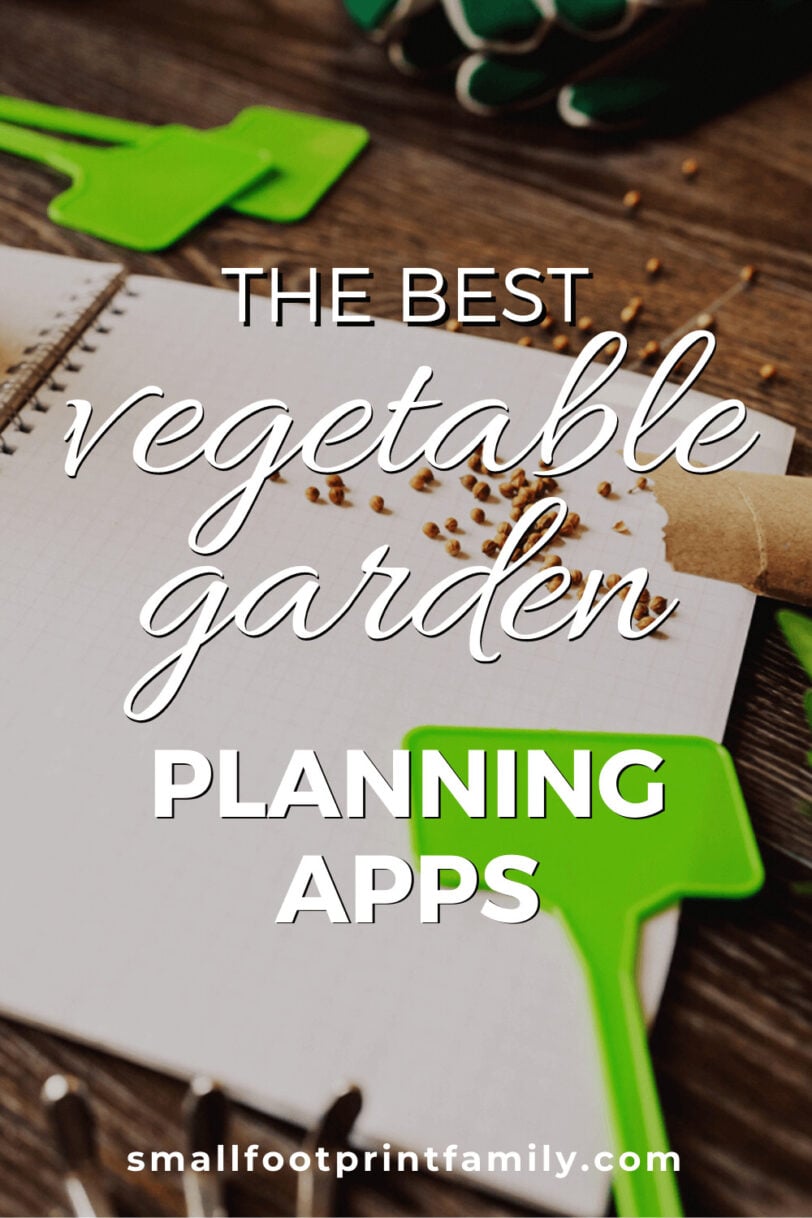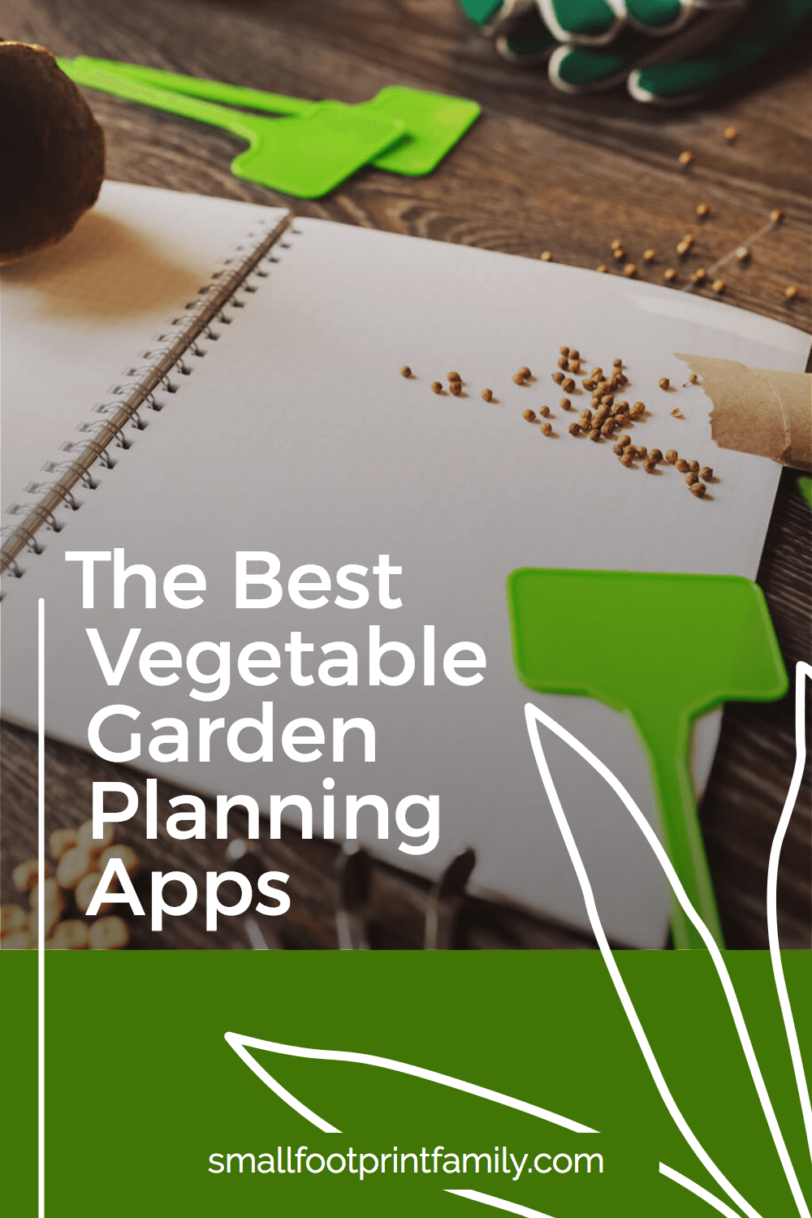The Best Vegetable Garden Planning Apps
Whether your a garden sage or a total newbie, these five powerful vegetable garden planning tools can make planning this year’s garden a snap!
Elements of a Garden Plan
When creating a garden plan, there are several important variables to consider—whether you use an app or the pencil and paper method. You will need to factor:
- the size of your garden
- the amount of sun your garden gets throughout the year, and the length of your growing season
- the number of people the garden will be feeding
- what you like to eat, and the space those plants take to grow
- what you would like to can, preserve or freeze
- the needs of the plants you want to grow (sun/shade, soil pH, annual/perennial, etc.)
- the method of gardening you are using (raised beds, rows, Square Foot, biointensive, etc.)
- what was successful in the garden last season, and where you planted it
- what was unsuccessful in the garden last season (and why), and where you planted it.
After considering the factors above, most gardeners start with a piece of graph paper and some pencils, and sketch out a plan of their yard. (Sometimes, they even measure so it’s to scale!)
Then, if you are a beginner gardener, you will probably spend a lot of time looking at charts in gardening books or the instructions on the back of your seed packets to determine when to plant, how much space each plant needs to grow, and roughly when you will harvest.
Then, through nearly superhuman feats of logic, mathematics and geometry, you will calculate schedules for your garden that will give you all the food you want, while also considering seasonality, crop rotations, companion planting, and phases of the moon.
You might even make a spreadsheet.
Or, you give your brain a Charley horse with the effort, and just end up sticking some seeds and seedlings from the nursery in the ground to map out later. (Maybe.)
Other Gardening Planning Articles
What to Look For in a Garden Planning App
While gardening should be at least as much a joy as it is an effort, if you want to have a garden that can provide a good portion of your food (if not all of it), you’ll need to have a plan. (Moon phases optional.)
Fortunately, some of those people overwhelmed (or perhaps bored) by garden planning logic puzzles and spreadsheets happened to be computer programmers. And they made the perfect apps for people new to, intimidated by, or tired of “old-school” pencil-and-paper garden planning.
Any basic vegetable garden planning app worth its salt should calculate all the things a gardener planning on paper would need to consider, like:
- The USDA Agricultural Zone and first and last frost dates for your area
- The proper times of year to sow, thin, fertilize and harvest the crops you want to grow, and
- The number of plants that will fit into the size of your garden
- When to sow succession crops for a continuous harvest.
Nice features for a premium garden planning app to also include:
- The ability to save your garden plans from year to year, making crop rotation easy
- A journal for keeping garden notes, such as pest and disease issues, bumper crops, etc.
- A robust visual design app for drag-and-drop, to scale, garden bed design
- Calculators for how much food you need for the number of people in your household
- Email or SMS reminders for your garden tasks.
Consider your garden needs and experience, as well as your budget, when choosing a garden planning app. Some have more bells and whistles than you might need, while others might not be helpful for the amount of food you want to grow.
The 5 Best Vegetable Garden Planning Apps
Thanks to these well-made vegetable garden planning apps, designing, planting and tending your garden has never been easier! At a variety of price points and feature packages, there is a great planner for new and experienced gardeners alike, below.
SeedTime

SeedTime is a relatively new garden planning app that offers a free basic calendar planner, and advanced visual planner subscriptions starting at $10/month. It’s made by gardeners for gardeners, and it shows in every aspect of the program.
SeedTime uses a powerful, user-friendly calendar program to help you plan out your garden. There are over 2,650+ pre-set vegetables, cover crops, herbs, and flowers in the database to choose from, or enter your own crop varieties if they’re not available. In the advanced plan, crop data is entirely customizable.
Whenever you click and drop a specific crop into your calendar, it’ll automatically map out exactly when to seed it, prepare the bed, transplant, and even estimate harvest dates for you based on your region. Then, SeedTime compiles a task list and sends you weekly reminders—so you always know exactly what to plant, tend or harvest, and when. They’ve made gardening almost too easy!
You can easily drop in succession plantings of any crop to plan for a continual harvest, too. Succession planting schedules are automatically calculated based on your region—or you can customize them. And, as your garden grows, you can use the SeedTime Journal feature to save, sort, search or filter your garden notes, too.
Finally, SeedTime has extensive gardening education videos on their website, with step-by-step instructions for every garden task. They have an active Facebook group, and regular newsletters with tons of seasonal tips and tricks. And if you need seeds for your garden, SeedTime even has a store connecting you with organic and heirloom seed providers.
The free plan offers only the Gardening Calendar with little customization. However, their calendar is very powerful and easy to use, and should be enough for beginning gardeners. If you subscribe, the SeedTime calendar becomes fully customizable, and you also get a powerful visual planner that allows you to map out your garden to scale.
Unlike many garden planning apps, the SeedTime visual designer lets you create a scale design of your entire property, not just your vegetable garden beds. This lets you plan pathways, edible landscaping beds, fruit trees, and more. And, of course, the visual designer is integrated directly with the calendar, so you know not only when to plant, but also where.
SeedTime is a truly spectacular addition to vegetable garden planning apps, and their free planner is the most powerful, no-cost option currently available.
VegPlotter

VegPlotter is a very robust garden planning app that allows you to customize and plan your vegetable garden for anywhere in the world.
You can plan a small garden for free, but if you have a large plot, plans start at a very reasonable $18/year. Once you register, you can save your plans and begin to receive notifications about when to plant and harvest.
VegPlotter works on a month by month basis to tell you when is the right time to sow, harvest, or complete other gardening tasks. The app initially asks you for your location and the date so it can recommend which vegetables, herbs or fruits are timely and appropriate to plant in your region.
VegPlotter then allows you to create your garden design to scale using its user-friendly drag-and-drop interface. In fact, the tool is so easy to use that even middle-schoolers use it to design their classroom vegetable gardens in the U.K.. You can create flat or raised beds in rectangular, round, or irregular shapes, and the app even accommodates Square Foot Gardening beds.
Once you have the best layout for your garden beds, VegPlotter has a very large database of vegetables, herbs and fruits, and well-researched “Grow Guides” for each type of plant. The planting function provides basic planting distances and harvest times for each plant, but you can adjust these with the specific data from your variety’s seed package.
And as a nice bonus feature, once you designate an area for a certain crop, VegPlotter will recommend good companion crops to plant nearby, and help you with crop rotation by warning you if you are putting similar plants in the same spot.
VegPlotter works well on mobile, is affordable, and has just about everything you need to plan and grow a year’s worth of flowers and food from your garden.
GrowVeg

The GrowVeg garden planning app is the leading online garden planning software in the U.S.—for good reason. It is $35 for an annual subscription, but you can try it free for 7 days. GrowVeg is also available for your smartphone and tablet.
GrowVeg determines the best times for you to plant based on your zip code, and finds the average first and last frost dates for your area. (If your experience in your particular microclimate points you toward different dates, you have the option of setting the frost dates yourself.) Then GrowVeg will use these dates to tell you the best planting times for dozens of garden crops.
The GrowVeg database knows how much space your plants require and how to group them for maximum success, removing the need to look up planting distances and crop families, so you can quickly see how many plants will fit in a given bed or row.
You can quickly find companion plants for each type of vegetable you are planting, plan succession plantings for later in the season, and even plot out your drip irrigation lines.
Once your plan is complete, the software compiles a chart showing how many of each plant you need to buy or raise from seed, the correct spacing and recommended planting dates for your area. You can print both the plan and plant list as a handy reference to take into your garden.
GrowVeg will even send you twice-monthly email reminders about what crops to sow and plant from your plans, enabling you to keep track of succession plantings very easily. It really couldn’t get much more convenient!
If your garden beds are already in place, simply set up your garden’s template in the application and start plugging in plants. Or, use the app to design new vegetable beds for any garden. GrowVeg even has space calculations for the Square Foot Gardening method!
One really neat feature is that GrowVeg will help you rotate your crops next year, plan for cover crops, leave notes about when to add compost and fertilizer and more. For a well-organized and timely planted garden, this app covers just about everything, and is well worth the annual subscription fee.
SmartGardener

SmartGardener is an affordable garden planning app that has some pretty robust tools. ($15/season, $40/year) Their plant database maintains over 3,000 varieties of seeds (which are sold on the site). They also have a nice little library of gardening tips and videos, and a forum, too.
After setting your location and answering a few questions, SmartGardener calculates your planting zone and gives you suggestions on what to plant and when. Then, very conveniently, you can have SmartGardener email you with garden tasks for the week, telling you when to plant and harvest each variety you select to plant in your garden.
The planner itself is pretty intuitive, and lets you set a square-foot grid any size you like. It gives you a variety of shapes and sizes for your garden beds that you can adjust in square-foot increments to fit your plot. The designs are simple and attractive, and you can share your garden plans with other members of the Smart Gardener community.
From there, you will need to choose and place your particular plant varieties from their database. The only plants offered for the planner are those offered by their seed vendors, which means that if you plant a type of melon or carrot that isn’t offered by their vendors, it cannot calculate the harvest times for that variety.
You can work around this to a degree by finding a variety in the app that is similar to the one you want to plant, but the full functionality of the program is limited by the vendor-based plant database, since it is these vendors who sponsor this planner.
Overall, this is a good garden planner at a fair price, but if you are trying to homestead or raise a significant quantity of food, you might need a more robust resource.
Kitchen Garden Planner by Gardener’s Supply Company

The Kitchen Garden Planner is a free, basic vegetable garden planner created by Gardener’s Supply Company, one of the better mail order gardening retailers. (They also have a very useful raised bed soil calculator, too!)
The Kitchen Garden Planner offers users two very convenient options: Selecting a pre-planned garden or creating your own garden plan using the Square Foot Gardening method.
For newbie gardeners, a pre-made garden plan can really make planning and planting your first garden very easy. Even experienced gardeners will find the pre-made plans unique and inspiring! The pre-designed bed templates are one of the best features of this planning app.
The Kitchen Garden planner is incredibly easy to use; you simply put in the dimensions of your garden beds and then drag and drop the plants you want to grow onto the squares on the grid. Beneath the plan, you will find planting instructions for every plant you have selected. You can neatly save your plan and print it out, or browse the rest of the site for tons of outstanding organic gardening advice.
Unlike premium planners, this planner only uses the Square Foot Gardening method. It also doesn’t calculate frost dates to tell you when to plant, nor can it plan for successions of crops throughout the year. And it doesn’t give you plant lists or send you reminders to keep you on track. You have to figure all that out yourself.
But for a free planner, the Kitchen Garden Planner is a nice, high-quality, user-friendly app.
I hope you’ll try one of these online vegetable garden planning tools to create a beautiful and productive garden this year.
Photo credit: Deposit photos









